Designing a home gym in your custom-built home offers the convenience of working out without leaving your space. It allows you to create a personalized fitness environment tailored to your routine, preferences, and lifestyle. Whether you’re into strength training, cardio, yoga, or a mix of everything, a well-designed home gym can boost your fitness goals and make exercising more enjoyable. How to design a home gym in your custom built home. Stay fit and healthy with a custom home fitness gym. Work with Better Build Now here through construction consulting services.
Here’s how to design a home gym in your custom-built home that suits your needs and motivates you to stay active.
1. Define Your Fitness Goals
The first step in designing a home gym is understanding your fitness goals. Are you focused on strength training, cardio, flexibility, or a combination of these? Determining what type of workouts you’ll be doing most frequently helps you plan the layout, equipment, and space required.
For weightlifting and strength training, you’ll need durable flooring and storage for weights. If you prefer cardio, having enough space for a treadmill, elliptical, or bike is essential. If yoga or pilates is more your style, an open space with natural light and calming décor will enhance your workout experience.
Tip:
Make a list of the fitness activities you enjoy most, and design your gym around those activities.
2. Choose the Right Location
Where you place your home gym is important. It should be in a space that is convenient, quiet, and away from distractions. If possible, choose a room with natural light, as it can improve your mood and boost energy during workouts. A basement, spare bedroom, or garage are common choices for home gyms.
The location should also allow enough room for you to move comfortably, especially if you do activities like yoga, pilates, or HIIT workouts. If you plan to install heavy equipment, like treadmills or weight racks, make sure the floor is strong enough to support the weight.
Tip:
Consider soundproofing the room, especially if you live with others, to keep noise from disrupting the rest of the house.
3. Plan the Layout
Once you’ve chosen the location, the next step is planning the layout of your gym. Create a floor plan that maximizes the available space while ensuring smooth movement during your workouts. For instance, if you plan to include both cardio equipment and weights, arrange them so you can easily transition between exercises without feeling cramped.
Think about the different zones you’ll need. Create separate areas for cardio machines, weightlifting, stretching, and bodyweight exercises. This approach ensures that your home gym remains organized and functional.
Tip:
Measure your equipment and the room before buying anything to make sure everything fits comfortably in the space.
4. Invest in Quality Equipment
Quality equipment is key to creating a functional home gym. Choose equipment that aligns with your workout routine, lifestyle, and fitness goals. Investing in durable, versatile equipment not only makes your gym more effective but also saves space.
For strength training, consider adjustable dumbbells, kettlebells, resistance bands, and a weight bench. If cardio is your priority, options like a treadmill, elliptical, or rowing machine are great choices. Multi-functional machines, like a cable machine, can replace several pieces of equipment, maximizing space efficiency.
Tip:
Opt for foldable or compact equipment if you’re working with a smaller space. Many cardio machines now offer foldable designs for easy storage.
5. Consider Flooring Options
The right flooring is crucial for comfort and safety in a home gym. Hardwood or concrete floors can be too hard on your joints and may not withstand the weight of gym equipment. Rubber flooring is a popular choice for home gyms because it provides shock absorption, protects the floor from damage, and reduces noise.
Other flooring options include foam tiles, which are ideal for yoga or bodyweight exercises, and vinyl or cork, which offer durability and ease of cleaning. Ensure that your flooring is slip-resistant and can handle the impact of dropped weights.
Tip:
Choose flooring that is easy to clean and maintain, especially if your gym will have high traffic or heavy use.
6. Maximize Storage Solutions
Keeping your home gym organized is key to maintaining a functional and inviting space. Invest in smart storage solutions to keep your equipment tidy when not in use. Wall-mounted racks for dumbbells, kettlebells, and resistance bands free up floor space and make your gym feel more open.
Storage benches or cabinets are perfect for hiding smaller equipment like yoga mats, foam rollers, or medicine balls. If you have a lot of equipment, consider adding custom-built storage options to keep everything accessible and organized.
Tip:
Install shelves or wall-mounted hooks to store items vertically, maximizing your floor space for exercises.
7. Incorporate Mirrors
Mirrors are a must-have feature for any home gym. Not only do they create the illusion of a larger space, but they also allow you to monitor your form while exercising. Maintaining proper form is essential to prevent injuries, especially during strength training or flexibility exercises like yoga.
Mirrors also reflect light, making your gym brighter and more welcoming. You can opt for a full-length mirror along one wall or several smaller mirrors placed strategically around the room.
Tip:
Place mirrors near your workout areas, such as the weightlifting zone or yoga mat, to check your posture and alignment easily.
8. Optimize Lighting
Good lighting is essential for any workout space. Natural light is ideal, as it boosts mood and energy, so choose a location with large windows if possible. However, if your gym is in a basement or another room with limited natural light, make sure to install bright, adjustable lighting.
LED lights are energy-efficient and can mimic daylight, making them perfect for home gyms. Install dimmable lights to adjust the brightness based on your workout. For example, you can use brighter lighting for cardio or weights and softer lighting for yoga or stretching.
Tip:
Add task lighting to specific areas of the gym, such as around the equipment or stretching zones, for extra visibility.
9. Add Entertainment Options
Working out at home doesn’t mean you have to give up on entertainment. Adding a TV, sound system, or streaming device can keep you motivated and engaged during your workouts. You can use the TV for workout videos, streaming fitness classes, or simply watching your favorite shows while on the treadmill.
A sound system or Bluetooth speakers allow you to play your favorite music or follow guided workouts. Entertainment options help you stay focused, especially during longer cardio sessions.
Tip:
Consider installing a wall-mounted TV to save space and keep it at eye level for better visibility while working out.
10. Create an Inviting Atmosphere
Your home gym should be a space that motivates and inspires you to exercise. The atmosphere plays a big role in creating that sense of motivation. Adding personal touches, such as motivational artwork, framed quotes, or vibrant colors, can boost your mood and make the space more inviting.
Choosing calming colors like blues and greens can create a peaceful vibe for yoga or stretching, while brighter colors like orange or yellow can energize you during high-intensity workouts. Incorporating plants or greenery can also make the space feel fresh and lively.
Tip:
Decorate with motivational quotes or personal achievements to inspire you to stay on track with your fitness goals.
11. Include Space for Recovery
Recovery is a crucial part of any fitness routine, so it’s important to include a space in your home gym dedicated to recovery. A small area with comfortable seating, a foam roller, or even a massage chair can provide a relaxing spot to cool down after a workout.
If space allows, consider adding features like a sauna or a stretching zone with mats and resistance bands. This recovery space ensures that you have everything you need for a complete workout, from warm-up to cool-down.
Tip:
Place a mini fridge in your recovery zone to store water, protein shakes, or other post-workout refreshments.
12. Ensure Proper Ventilation
Good ventilation is essential in a home gym to maintain air quality and prevent the space from feeling stuffy during workouts. Proper ventilation also helps control humidity, which can be an issue in smaller or enclosed rooms.
If your gym is located in a space without windows, install a ceiling fan or air purifier to keep the air fresh. Air conditioning or a portable fan can also help regulate the temperature, especially during intense workouts.
Tip:
Consider adding an air purifier to reduce allergens and improve the air quality in your gym.
Conclusion
Designing a home gym in your custom-built home gives you the opportunity to create a personalized workout space that fits your fitness goals and lifestyle. By carefully planning the layout, investing in quality equipment, and optimizing lighting, storage, and atmosphere, you can create a space that motivates you to stay active and healthy.
From choosing the right flooring to incorporating entertainment and recovery areas, these design tips will help you create a functional, inviting, and efficient home gym that keeps you on track with your fitness routine. How to design a home gym in your custom built home. Stay fit and healthy with a custom home fitness gym. Work with Better Build Now here through construction consulting services.


